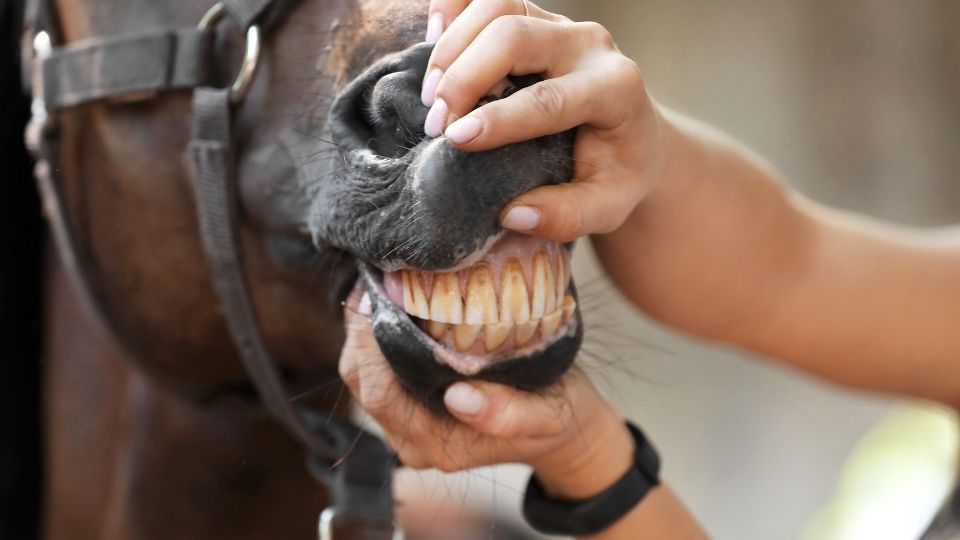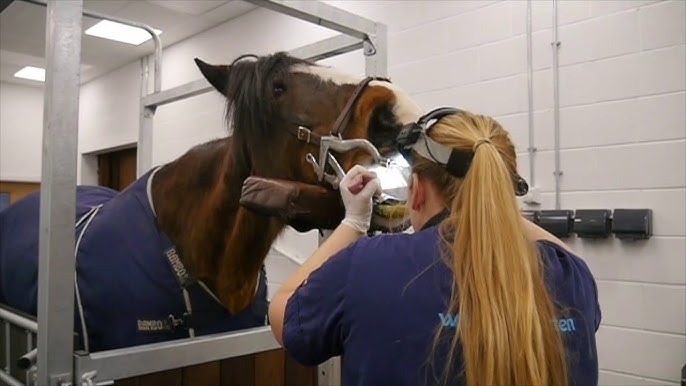Understanding dental aging signs in horses is crucial for anyone involved in equestrian activities. Horses, much like humans, go through various stages of dental development and deterioration throughout their lives. Recognizing these signs not only helps in managing their health but also ensures their performance and comfort. For equestrian enthusiasts, knowing about these signs is vital for maintaining a horse’s overall wellbeing.

Why Dental Health is Important for Horses
Horses rely heavily on their teeth for grinding food, which is essential for proper digestion. Poor dental health can lead to difficulties in eating, weight loss, and even behavioral problems. Regular dental check-ups are a must to prevent these issues. A horse’s dental condition can also provide insights into its age, which is why understanding dental aging signs in horses is so important.
Basic Anatomy of Horse Teeth
Before delving into aging signs, it’s important to understand the basic anatomy of horse teeth. Horses have two sets of teeth in their lifetime: deciduous (baby) teeth and permanent teeth. The wear and condition of these teeth can indicate the horse’s age. For more detailed information, you can refer to equine dental terminology.
Deciduous Teeth
Also known as milk teeth, these are temporary and will eventually be replaced by permanent teeth. They are smaller and whiter than permanent teeth.
Permanent Teeth
These teeth are larger, darker, and should last for the horse’s lifetime if maintained properly.
Dental Aging Signs in Horses
Incisor Wear Patterns
The wear patterns on a horse’s incisors can reveal a lot about its age. As horses age, their incisors undergo changes in shape and angle. Younger horses have vertical incisors, while older horses’ incisors tend to slant outward.
Galvayne’s Groove
This is a vertical groove that appears on the upper corner incisor teeth. It usually appears around the age of 10 and can help estimate a horse’s age. By the age of 20, the groove reaches the bottom of the tooth.
Changes in Tooth Shape
As horses get older, their teeth change shape, moving from an oval shape to a more triangular one. This is due to the natural wear and tear over the years.
Tooth Eruption and Replacement
Young horses experience the eruption and replacement of their deciduous teeth with permanent teeth. This process is typically complete by age 5. Observing this process can help determine the horse’s age.
The Impact of Diet and Environment
A horses diet and environment play significant roles in dental health. Horses that graze on coarse forage will naturally have more wear on their teeth compared to those fed on softer foods. The environment can also affect the rate at which teeth wear down.
Role of Diet
A balanced diet can slow down the aging process of a horses teeth. Providing a mix of grazing and supplemental feed can help maintain dental health.
Environmental Factors
Horses in sandy environments may experience quicker wear due to the abrasive nature of sand. It’s important to monitor these horses closely.
Recognizing Dental Problems Early
Early recognition of dental issues can prevent more serious health problems. Look for signs such as difficulty eating, weight loss, and bad breath. Regular dental exams are crucial, and you can learn more about what to look for in a horse mouth exam checklist.
Common Dental Issues
Some common dental problems include sharp molars, loose teeth, and oral tumors. Each of these issues can affect a horse’s ability to eat and perform.
Behavioral Signs
Changes in behavior, such as increased aggression or reluctance to perform, can indicate dental issues. For a deeper understanding of the relationship between horse behavior and tooth issues, you can explore more.
The Role of Regular Dental Check-Ups
Regular dental check-ups are vital to identifying and addressing dental aging signs in horses. A professional can provide insights and prevent minor issues from becoming major problems.
Frequency of Check-Ups
It’s recommended that horses undergo a dental exam at least once a year. Older horses might require more frequent check-ups.
What to Expect During a Dental Exam
A comprehensive dental exam involves examining the mouth, teeth, and gums for signs of wear, disease, or other issues. For those considering purchasing a horse, a pre-purchase dental exam is a good idea.

FAQs About Dental Aging in Horses
How often should a horse’s teeth be checked?
It’s best to have a horse’s teeth checked at least once a year, though older horses may need more frequent check-ups.
Can dental issues affect a horse’s behavior?
Yes, dental issues can lead to changes in behavior, such as aggression or reluctance to work.
What is Galvayne’s Groove?
Galvayne’s Groove is a vertical groove on a horse’s upper corner incisor teeth, appearing around age 10, and is used to estimate age.
For more information on equine dentistry, visit the American Association of Equine Practitioners.
This article contains affiliate links. We may earn a commission at no extra cost to you.
